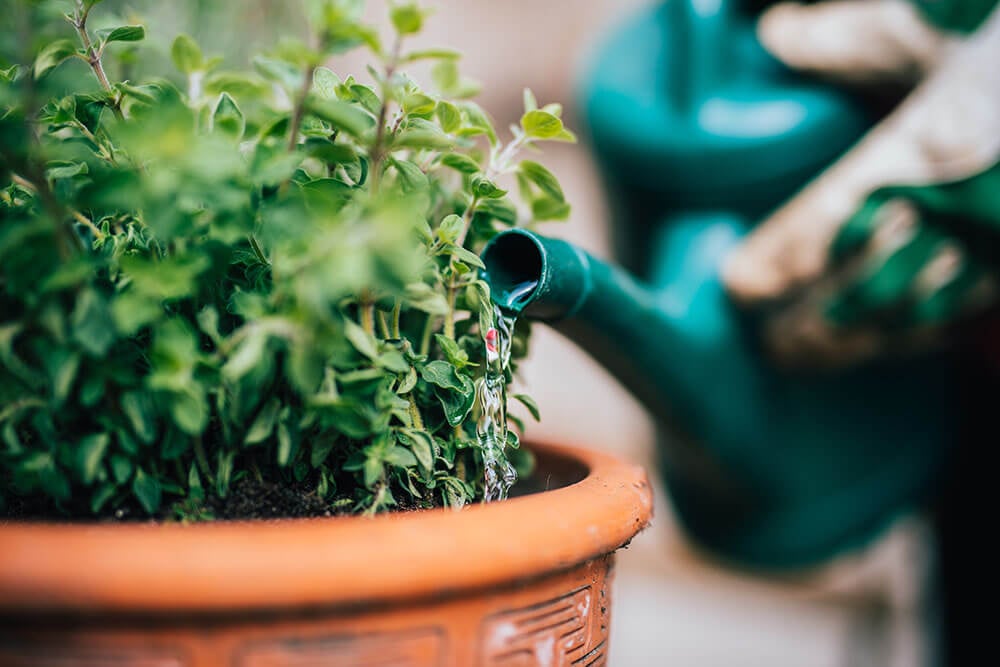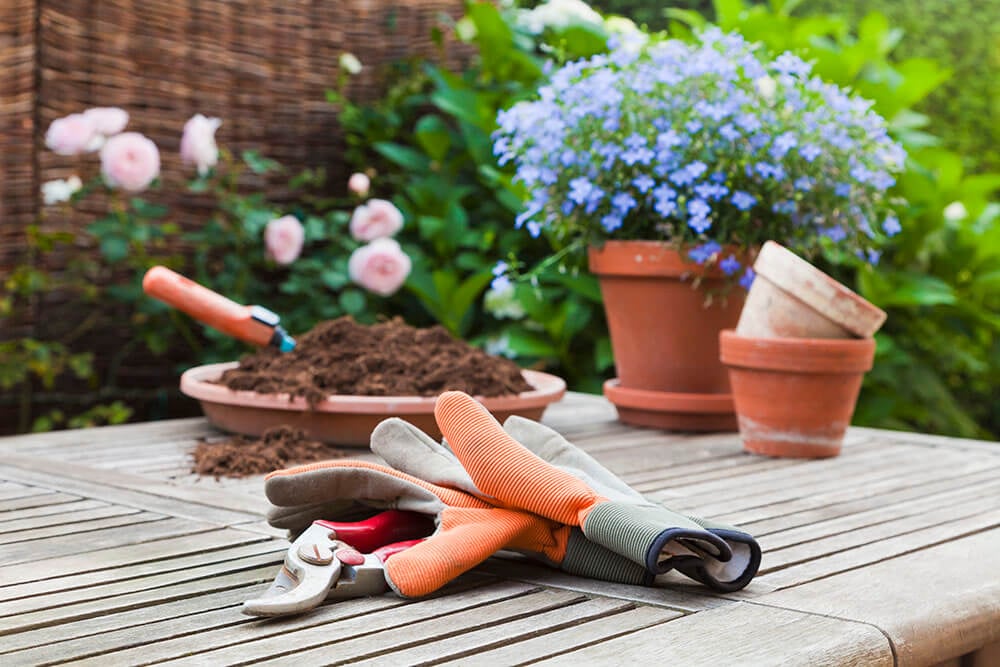The Best Ground Cover Plants to Beautify Your Yard
Picking the best plants for ground cover can up your curb appeal, support a habitat for pollinators, and go a long way towards helping you fall in love with the outside of your home all over again


While grass may be a good way to fill an empty space in your yard, ground cover plants can be a prettier option. There are a lot of choices when choosing the best plants for ground cover. But which ones are right for you? Here’s a look at the most popular ground cover plants, including USDA growing zones, and whether they need full or partial sun.
7 Low-Growing Plants for Sun or Shade
These seven low-growing plants are some of the most popular ground covers for anyone who wants to be the envy of the neighborhood. Keep in mind that, although most of these plants are tolerant, they still need your tender loving care to thrive, especially in the first year or two, until they are well-established.
1. Creeping Thyme
Low-growing creeping thyme thrives in full sun. In the late spring, tiny white and purple flowers bloom, making creeping thyme the perfect plant for pollinators. It is cold-weather tolerant and spreads quickly. Plus, you can use the leaves from some varieties to season your favorite lemon thyme rice recipe.
USDA growing zones: 4 to 9 (depending on variety)
Sun exposure: Full sun to part shade
Height: 2 to 6 inches tall
Width: 6 to 18 inches wide
Best for: Tight areas or to fill in the spaces between pavers
2. Ajuga
Ajuga is also known as "carpet bugleweed,” and it’s easy to see why it’s considered one of the best ground cover plants. It grows in almost any climate and tolerates both shade and sun, making it a low-maintenance ground cover option. Its glossy leaves are bronze, deep green, and brown.
“These lovely ground cover plants provide pops of contrast across several zones, making them an excellent choice for many homeowners,” says Tara Dudley, owner of Plant Life Designs.
In the summer months, ajuga grows small spikes of purple, blue, pink, and white flowers. It’s slow-growing and a beautiful accent that your neighbors will envy.
USDA growing zones: 4 to 9 (depending on variety)
Sun exposure: Sun to shade
Height: 6 to 12 inches tall
Width: Spreading
Best for: Ground erosion on steep hills or adding contrast to the perennial border with its dark foliage
3. Sedum
Sedum is a low-growing ground cover with thick leaves and small flowers ranging from chartreuse to bronze. The leaves retain enough water to survive through droughts and dry spells. But you’ll need to plant it in full sun to witness the blooms. Also, there are two types, low-growing and upright, which is more of a bush.
USDA growing zones: 5 and colder
Sun exposure: Full sun
Height: 2 to 6 inches tall
Width: 6 to 2 feet wide
Best for: Decorative borders and attracting pollinators

4. Mondo Grass
A popular ground cover in the southern U.S, mondo grass is a resistant, pet-friendly plant that can stand up to most anything, including pesky pests and deer. It grows in clumps, has small, white flowers that appear in summer, and doesn’t take much care to keep it looking good. This plant needs watering, however, and prefers partial sun to shade.
USDA growing zones: 6 to 10
Sun exposure: Partial sun to shade
Height: 2 to 6 inches tall
Width: 6 to 18 inches wide
Best for: Shady spots around the base of trees or as a garden border
5. Periwinkle
Periwinkle has flowering plants with variegated foliage. These dwarf shrubs require regular pruning to keep them from taking over your yard but grow in areas where grass won’t grow. Periwinkle does very well in the shade and under trees. Its bluish-lavender flowers bloom in spring and remain in bloom during the summer months.
USDA growing zones: 4 to 8
Sun exposure: Full sun to full shade
Height: 3 to 6 inches tall
Width: Spreading
Best for: Under trees or where grass won’t grow
6. Chamomile
Many people use chamomile (the German version) to make tea, while Roman chamomile makes a beautiful ground cover around a walkway or bordering a planter. Both are low-growing and fragrant but can grow up to 24 inches tall in the best conditions.
They have white daisy-like flowers with a yellow center that bloom quickly, making them a popular ground cover plant for homeowners. Best planted in the spring, they thrive in full sun.
USDA growing zones: 2 to 9
Sun exposure: Full sun
Height: 8 to 24 inches tall
Width: 8 to 12 inches wide
Best for: As a border along a walkway
7. Hostas
Hostas are a favorite plant of most gardeners, mainly because they are so hardy and can sometimes outlive even the worst gardener. No green thumb needed to grow this ground cover. This plant can brighten even the shadiest spots and add texture and color to your garden with purple, white, pink, and blue flowers. They are shade-tolerant but also can do well in partial sun.
USDA growing zones: 3 to 9
Sun exposure: Partial sun to full shade (depending on variety)
Height: 18 to 20 inches tall
Width: 35 to 40 inches wide
Best for: In gardens or moist, shaded areas
What Are the Fastest-Growing Ground Covers?
Whether you DIY or hire a garden designer, fast-growing ground covers are a great choice. The fastest-growing ground covers are low-maintenance and crowd out weeds. They do best in places where nothing else grows—you know, those problem areas that are a thorn in your side. Here’s a look at some of the best options for fast-growing ground covers.
Wild Thyme
Small pink flowers
Drought-resistant
Gives off a peppery fragrance when walked on
USDA growing zones: 5 to 9
Sweet Woodruff
Best in moist, shady areas
Small white flowers in spring and summer
Smells like fresh hay
USDA growing zones: 4 to 8 (heads up: this groundcover can spread aggressively)
Aubrieta
Easy-to-care-for ground cover
Grows best in full sun and hot areas
Drought-resistant
USDA growing zones: 4 to 9
Moss Phlox
Also known as moss pink or creeping phlox
Deer, erosion, and drought-resistant
White, red, pink, blue, and purple varieties
USDA growing zones: 5 to 9
Golden Creeping Jenny
Shaggy ground cover with vibrant, yellow flowers and bright chartreuse foliage
Prefers to grow in wet areas
Covers large areas quickly
USDA growing zones: 4 to 9

Best Flowering Ground Covers
If you prefer not to mow any more grass than necessary and want to add a bit of color to your yard, pathway, or at the base of trees, you might consider these popular flowering ground covers that thrive in both sun and shade.
Canadian Anemone
Individual white flowers with dark green leaves
Full sun to part shade
Prefer moist soil
USDA growing zones: 3 to 8
Deadnettle
Pink blossoms bloom from May to July with beautiful variegated foliage throughout the growing season
Prefers the shade
Likes cool, low-humidity areas
USDA growing zones: 4 to 9
Horned Violet
Scented, two-toned flowers in shades of blue and purple
Full sun to partial shade
Average watering needed
USDA growing zones: 3 to 8
Lithodora
Tiny, bright blue flowers
Partial shade
Needs well-drained soil
USDA growing zones: 6 to 8
Wishbone Flower
Purple, white, pink, and yellow trumpet-shaped flowers
Grows best in part to full shade
Moist, well-drained soil
USDA growing zones: 2 to 10
What Are the Best Cold-Hardy Ground Covers?
If you live in climates where temps can dip below freezing, you may wonder if there are ground covers that will bloom again in the spring. Thankfully, there are plenty of options for the cold zone gardener. Here are the best cold-hardy ground covers.
Lambs Ear
Kids love the soft, velvety leaves that look like lamb’s ears
Like aloe, you can use the leaves to take the sting out of bee stings
Produces pink and purple flowers in the summer
USDA growing zones: 4 to 8
Bronze Dutch Clover
Easy to grow
Full sun to partial shade
Slightly moist soil is best to bring out the red in the leaves
USDA growing zones: 4 to 8
Brass Buttons
Spreads quickly where nothing else grows
Yellow and green flowers that resemble buttons bloom in the spring
Fares better in partial shade
USDA growing zones: 5 to 9

Which Ground Covers Are Low Maintenance?
Low maintenance is one of the reasons why people like ground covers. After all, if you like to mow, you can just plant more grass. These popular low-maintenance ground covers will grow well even when neglected because they require next to nothing in care.
Heuchera
Best known for vibrant foliage; silver, green, or brass
Small pink flowers bloom in late spring
Deer and critter resistant
USDA growing zones: 4 to 9
Stonecrop
This succulent can thrive even in the driest settings
Bluish-green leaves with yellow buds that bloom in spring
Best for rock gardens or walls
USDA growing zones: 3 to 9
Lithodora
Bold blue flowers that attract butterflies
Natural deer repellent
Likes full sun and can withstand hot temps
USDA growing zones: 6 to 8
Ground Covers Add Low-Maintenance Beauty to Your Yard
Whether you’re a novice gardener or a master horticulturist, ground covers can be an excellent substitute for grass, bushes, or other greenery. Ground cover plants will add eye-popping color to your walkways, do well in the sun and shade, and require little effort on your part.
Not sure you have a green thumb? Hire a local gardening pro in your area who can add a pop of color to your yard, so you can stop and smell the roses.





- Landscapers
- Tree Surgeons
- Gardening Services
- Landscape Architects
- Sod Installation
- Tennis Court Contractors
- Landscape Design
- Retaining Wall Companies
- Grading Companies
- Landscape Rock & Sand Delivery
- Mulch Delivery Services
- Pond Companies
- Artificial Grass Companies
- Shrub Removal & Trimming
- Backyard Design Companies
- Commercial Landscaping
- Koi Pond Services
- Backyard Landscapers
- Trampoline Assembly
- Hedge Trimming
- Pond Services
- Garden Design
- Outdoor Plant Watering
- Putting Greens
- French Drains
- Turf Installation
- Sod Removal Services
- Lawn Repair Services
- Brush Chipping Services
- Hardscape Contractor
- Landscape Rock Removal
- 13 Lawn Alternatives for a Low-Maintenance Yard
- Flowers That Will Add Color to Your Garden Throughout the Year
- 18 Low-Maintenance Landscaping Ideas
- 53 Summer Flowers: Your Guide to a Vibrant Garden
- 16 of the Best Perennials to Plant for Year-Round Color
- 14 Unique Plants to Make Your Garden the Talk of the Town
- How to Spruce Up Your Existing Garden by Adding New Plants
- The Top 20 New Plants Hitting the Market in 2024
- 11 Fall Flowers to Plant for a Beautiful Garden
- 47 Landscaping Ideas to Consider for Your Home
















